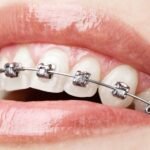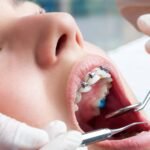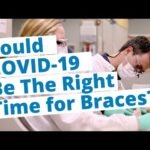Table of Contents
Assessing Your Dental Needs
When it comes to assessing your dental needs, it is essential to take a comprehensive approach and consider various factors that can impact your oral health. This assessment should begin with a thorough examination by a qualified dentist who can evaluate the current state of your teeth, gums, and overall oral hygiene. During this examination, the dentist may use diagnostic tools such as X-rays and dental imaging to identify any underlying issues that may require attention.

In addition to the physical examination, it is crucial to discuss your dental history and any concerns or goals you have regarding your oral health. This conversation with your dentist can provide valuable insights into your specific needs and help guide the development of a customized treatment plan. By taking the time to assess your dental needs in a comprehensive manner, you can ensure that the dental care you receive is tailored to your unique situation, promoting optimal oral health and overall well-being.
Understanding the Purpose of Adult Braces
Adult braces serve a specific purpose in correcting dental alignment and bite issues in individuals beyond their teenage years. While braces are often associated with adolescents, they can be equally beneficial for adults seeking to improve their oral health and overall well-being. The purpose of adult braces is to address various dental concerns, including crooked teeth, overcrowding, misaligned bites, and facial asymmetry.

The primary goal of adult braces is to create a harmonious and functional bite. When teeth are properly aligned, it improves oral health by reducing the risk of tooth decay, gum disease, and temporomandibular joint (TMJ) disorders. Moreover, adult braces can enhance the aesthetic appearance of the smile, boosting self-esteem and confidence. With advancements in orthodontic technology, adult braces have become more discreet and comfortable, making them a viable option for individuals who may have previously hesitated due to concerns about appearance.
Evaluating the Benefits of Adult Braces
Adult braces can offer a range of benefits for individuals seeking to improve their oral health and enhance their smile. One of the main advantages of adult braces is their ability to correct misaligned teeth, which can alleviate a variety of dental issues. Misaligned teeth can create uneven pressure on the jaw, leading to discomfort and even pain. By realigning the teeth, adult braces can help alleviate these symptoms and improve overall oral health.
| Benefits of Adult Braces |
|---|
| Improved Confidence |
| Corrected Bite Alignment |
| Enhanced Oral Health |
| Prevention of Tooth Decay and Gum Disease |
| Reduced Risk of Jaw Disorders |
| Straightened Teeth for Easier Cleaning |
| Potential Improvement in Speech |
| Enhanced Facial Aesthetics |
| Long-Term Investment in Overall Health |
In addition to addressing functional issues, adult braces can also have significant cosmetic benefits. Crooked teeth or gaps in the smile can cause self-consciousness and impact an individual’s self-esteem. Adult braces can help straighten the teeth, close gaps, and create a more aesthetically pleasing smile. This can boost confidence and improve overall quality of life. Furthermore, a straighter and properly aligned smile is easier to clean and maintain, reducing the risk of dental issues such as tooth decay and gum disease. Adult braces can help individuals achieve a healthier and more attractive smile, benefiting both their oral health and overall well-being.
Exploring Different Types of Adult Braces
When it comes to adult braces, there are several different types to consider. The type of braces that will work best for you depends on various factors, including your specific dental needs, the severity of your orthodontic issues, and your personal preferences. Here are a few of the most common types of adult braces:
1. Traditional metal braces: These are the most common and traditional type of braces. They consist of metal brackets that are bonded to the teeth and connected by metal wires. While they may not be the most aesthetically pleasing option, they are effective and can correct a wide range of dental problems.
2. Ceramic braces: Ceramic braces are similar to traditional metal braces in terms of function, but they are made of clear or tooth-colored materials. This makes them less noticeable and more visually appealing. However, they may be more prone to staining and can be slightly more expensive than metal braces.
3. Lingual braces: Lingual braces are placed on the inside surface of the teeth, making them virtually invisible when you smile. They are custom-made and can correct even complex orthodontic issues. However, they can be more challenging to clean and may cause some discomfort or speech changes initially.
4. Clear aligners: Clear aligners, such as Invisalign, have gained popularity in recent years. These custom-made aligners are virtually invisible and can be easily removed for eating, brushing, and flossing. They are a convenient option for those who want a more discreet treatment, but they may not be suitable for severe orthodontic problems.
It is essential to consult with an orthodontic specialist to determine which type of braces will be most suitable for your specific needs. Each type has its advantages and disadvantages, and the right choice depends on various factors that will be assessed during your consultation.
Considering the Duration of Treatment
The duration of treatment is an important factor to consider when contemplating adult braces. Each individual’s orthodontic journey is unique and depends on several factors, including the complexity of the dental issues and the desired outcome. On average, the duration of treatment with braces for adults can range from 18 months to three years. However, this is just a general estimate, and the actual time may vary from person to person.
It is crucial to understand that achieving optimal results with adult braces requires patience and commitment. The treatment process typically involves regular adjustments and periodic visits to the orthodontist. These appointments are essential for monitoring progress and making necessary adjustments to ensure the teeth are moving in the desired direction. While it may seem like a lengthy process, it is important to remember that the duration of treatment directly impacts the quality and longevity of the results. So, investing the necessary time and effort is crucial for a beautiful smile that lasts a lifetime.
Analyzing the Financial Implications
When considering adult braces, it is important to analyze the financial implications associated with this treatment option. Adult braces can involve significant costs, including initial consultations, braces, adjustments, and follow-up appointments. The exact cost will vary depending on factors such as the type of braces chosen, the duration of treatment, and the orthodontic specialist’s fees.
It is recommended to research and compare the costs of different orthodontic specialists in your area. While price shouldn’t be the sole determining factor in choosing a provider, it is important to find a balance between quality and affordability. Additionally, it is worth exploring insurance coverage options for adult braces. Some dental insurance plans may offer partial coverage for orthodontic treatment, reducing the financial burden. Understanding the potential financial implications of adult braces will help you make an informed decision and plan accordingly.
Examining Insurance Coverage Options
When considering adult braces, one important aspect to evaluate is the insurance coverage options available. Dental insurance plans vary widely, and not all of them provide coverage for orthodontic treatment. It is crucial to review your policy and understand the extent of your coverage before making any decisions.
Typically, dental insurance plans that offer orthodontic coverage have specific criteria that must be met in order to qualify for benefits. These criteria may include age restrictions, severity of the orthodontic need, and other factors. Additionally, it is important to note that coverage for adult braces may differ from coverage for braces for children and adolescents.
To determine your insurance coverage options for adult braces, reach out to your insurance provider and request a detailed explanation of your benefits. It may be helpful to ask specific questions such as the percentage of coverage provided, any deductibles or co-pays involved, and any limitations or waiting periods that may apply. By thoroughly understanding your insurance coverage, you can make an informed decision about how to best proceed with your orthodontic treatment.
Researching Orthodontic Specialists
When researching orthodontic specialists, it is important to find a qualified practitioner who is well-versed in the field of orthodontics. Look for a specialist who has completed advanced training in orthodontics and is a member of professional organizations such as the American Association of Orthodontics. These memberships demonstrate their commitment to staying up-to-date with the latest advancements and techniques in the field.
Another aspect to consider when researching orthodontic specialists is their experience and track record of successful treatments. Look for specialists who have a proven track record of achieving favorable outcomes for their patients. Reading reviews and testimonials from previous patients can provide valuable insight into the expertise and effectiveness of a specific specialist.

In addition to qualifications and experience, it is also essential to consider the location and convenience of the specialist’s practice. Choose a specialist who is located in a convenient location for regular visits and offers flexible appointment times to accommodate your schedule.
Overall, thorough research is crucial when selecting an orthodontic specialist as the success of your treatment relies greatly on their expertise and the quality of care they provide. By taking the time to research and evaluate potential specialists, you can ensure that you make an informed decision and receive the best possible orthodontic care.
Seeking Recommendations and Referrals
When considering adult braces, it can be helpful to seek recommendations and referrals from trusted sources. Your friends, family members, or colleagues who have undergone orthodontic treatment may be able to provide valuable insights and suggest reputable orthodontic specialists in your area. Additionally, you can reach out to your general dentist for recommendations, as they often have professional connections and can provide guidance based on your specific dental needs.
Online resources can also be a useful tool for seeking recommendations and referrals. Many reputable dental websites and forums have discussion boards where individuals share their experiences with orthodontic treatment and recommend orthodontists they trust. Reading these firsthand accounts can give you a better understanding of the quality of care provided by different orthodontic specialists and help you make an informed decision.
Remember, seeking recommendations and referrals is just one step in the process of evaluating adult braces as a treatment option. It is important to conduct further research and schedule consultations to assess your specific dental needs, understand the purpose of adult braces, and weigh the pros and cons before making a decision.
Preparing for Orthodontic Consultations
Preparing for orthodontic consultations is an important step in your journey towards achieving a beautiful and healthy smile. As you embark on this process, it is essential to come prepared so that you can make the most out of your appointment. Here are a few key points to consider:
1. Gather Information: Prior to your consultation, take the time to gather any relevant information about your dental history, including previous orthodontic treatments, dental X-rays, or any other relevant records. This will provide your orthodontist with valuable insights to better understand your specific needs.
2. List Your Concerns: Make a list of your dental concerns and questions that you would like to discuss with your orthodontist during the consultation. Whether you have concerns about potential treatment options, the duration of the treatment, or the cost involved, having a list prepared will ensure that all your queries are addressed.
Understanding the Treatment Process
The treatment process for adult braces involves several stages to correct misaligned teeth and achieve a straighter smile. The first step is the initial consultation with an orthodontic specialist. During this appointment, the orthodontist will examine your teeth, take X-rays and impressions, and discuss your treatment goals. This will help them determine the best course of action and develop a personalized treatment plan for you.
Once the treatment plan is finalized, the next step is the placement of the braces. This involves attaching brackets to your teeth using a dental adhesive and securing them with archwires. The orthodontist may also use elastic bands or other components to help move your teeth into the desired position. After the braces are in place, you will need to attend regular appointments for adjustments and check-ups. These visits are essential for monitoring progress, making any necessary changes, and ensuring that your treatment is on track.
Throughout the treatment process, it is important to maintain good oral hygiene to prevent plaque build-up and tooth decay. You will need to brush and floss regularly, paying extra attention to the areas around the brackets and wires. It is also advisable to avoid certain foods that may damage the braces, such as hard or sticky items. Additionally, you may experience some discomfort or pain during the initial stages of treatment, but this will typically subside as your teeth adjust to the braces.
Understanding the treatment process for adult braces can help you make an informed decision about whether they are right for you. It is important to consult with a qualified orthodontist who can guide you through each step and address any concerns or questions you may have. With proper care and adherence to the treatment plan, adult braces can help you achieve a healthier, more confident smile.
Anticipating Potential Discomfort or Pain
Discomfort or pain is a common concern when it comes to orthodontic treatment, including adult braces. It is important to anticipate and prepare for potential discomfort as it can vary depending on the type of braces and individual sensitivity.
During the initial period of adjustment, it is normal to experience some soreness or tenderness in the mouth. This discomfort is usually mild and can be managed with over-the-counter pain relievers and a soft diet. Applying orthodontic wax to the braces can also help alleviate any irritation caused by the brackets or wires rubbing against the inner cheeks or lips.
It is worth noting that discomfort or pain tends to decrease as the mouth adjusts to the braces. However, there may be times throughout the treatment process when adjustments are made to the braces, leading to temporary soreness. It is crucial to follow your orthodontist’s instructions and attend regular appointments, as this will help minimize the duration and intensity of any discomfort. Rest assured, the discomfort experienced during orthodontic treatment is temporary and a small price to pay for achieving a healthy, beautiful smile in the long run.
Considering Lifestyle Changes
Lifestyle changes are often a necessary consideration when it comes to adult braces. While the idea of undergoing orthodontic treatment may seem daunting at first, it’s important to understand that with a few adjustments, the process can be well-integrated into your daily routine.
One aspect of lifestyle changes to consider is dietary adjustments. Certain foods, such as hard candies, popcorn kernels, and sticky treats, should be avoided during treatment as they can damage the braces. It’s also worth noting that braces can make chewing certain foods more difficult initially, so it may be necessary to modify your diet temporarily. However, it is crucial to maintain a balanced and nutritious diet to support your overall oral health and well-being. Consulting with your orthodontist and a registered dietitian can provide valuable guidance on how to make appropriate dietary modifications while wearing braces.
Planning for Oral Hygiene Maintenance
Maintaining good oral hygiene is crucial when undergoing orthodontic treatment with adult braces. Proper care and maintenance of your braces will not only ensure optimal results but also prevent oral health issues such as tooth decay and gum disease. Here are some essential tips for planning your oral hygiene routine during your adult braces journey.
Firstly, it is important to brush your teeth thoroughly after every meal and snack. Use a soft-bristled toothbrush and fluoride toothpaste to clean all surfaces of your teeth, including around the brackets and wires. Pay extra attention to areas that may be harder to reach, such as the back molars. Don’t forget to gently brush your braces themselves, ensuring all food particles and plaque are removed.
In addition to brushing, flossing is equally important for maintaining oral hygiene with braces. Regular flossing can help remove trapped food particles and plaque from between your teeth and around the braces. It is recommended to use floss threaders or orthodontic floss that are specifically designed for braces, as they can easily navigate around the wires.
| Aspect | Description |
|---|---|
| Brushing | – Brush teeth twice daily with fluoride toothpaste. |
| – Use a soft-bristled toothbrush and gentle, circular motions. | |
| Flossing | – Floss teeth once a day to remove plaque and food particles from between teeth. |
| – Use proper flossing technique, gently sliding the floss between teeth and along the gumline. | |
| Mouthwash | – Rinse with antimicrobial mouthwash to reduce bacteria and freshen breath. |
| – Use as directed, typically after brushing and flossing. | |
| Diet | – Limit sugary and acidic foods and beverages that can contribute to tooth decay. |
| – Consume a balanced diet rich in fruits, vegetables, and calcium-rich foods for strong teeth. | |
| Dental Check-ups | – Schedule regular dental check-ups every six months for professional cleaning and examination. |
| – Address any dental issues promptly to prevent them from worsening. | |
| Lifestyle Habits | – Avoid smoking and excessive alcohol consumption, which can harm oral health. |
| – Maintain overall health through regular exercise and stress management, which can impact oral health. | |
| Equipment Maintenance | – Replace toothbrush every 3-4 months or sooner if bristles are frayed. |
| – Store toothbrush upright and allow it to air dry between uses to prevent bacterial growth. | |
| – Keep dental appliances, such as retainers or night guards, clean according to dentist’s instructions. |
Taking care of your oral hygiene during your adult braces journey will not only protect your teeth and gums but also contribute to the success of your treatment. Remember to schedule regular check-ups with your orthodontist for professional cleaning and adjustments to ensure the best possible outcome for your smile transformation.
Assessing the Impact on Speech and Eating
Adult braces can have an impact on speech and eating, particularly during the initial adjustment period. It is common for patients to experience some difficulty pronouncing certain sounds or words when they first get braces. This is because the brackets and wires can affect the position of the tongue and lips, making it harder to form specific sounds. However, with practice and time, most individuals are able to adapt and resume normal speech patterns.
Similarly, eating can also be challenging in the beginning. The braces may cause discomfort while chewing, and there may be limitations on certain foods that are sticky or hard. It is important to follow the orthodontist’s recommendations on a diet that is braces-friendly, which typically involves avoiding hard candies, popcorn, and chewy foods. However, as the mouth adjusts to the braces and the patient becomes more comfortable, they can gradually reintroduce these foods into their diet. It is essential to remember that any temporary difficulties experienced with speech and eating are outweighed by the long-term benefits of adult braces in achieving a healthier and more aligned smile.
Weighing the Pros and Cons Before Making a Decision
When considering whether to pursue adult braces, it is important to carefully weigh the pros and cons before making a decision. Adult braces can provide numerous benefits, including improved dental alignment, enhanced oral health, and a boost in self-confidence. However, it is crucial to also consider potential drawbacks and challenges that may arise during the treatment process.
One of the key advantages of adult braces is the ability to achieve a straighter and more attractive smile. Correcting dental alignment issues can not only enhance your appearance but also improve your overall oral health. Properly aligned teeth are easier to clean, reducing the risk of cavities, gum disease, and other dental concerns. Additionally, an improved smile can boost self-esteem and leave a lasting positive impression.
While there are many benefits to consider, it is also important to acknowledge the potential challenges of adult braces. The treatment process can be lengthy, often spanning several months or even years. This requires a significant commitment, both in terms of time and financial investment. Additionally, some individuals may experience temporary discomfort or pain during the adjustment period. It is crucial to discuss these potential challenges with your orthodontic specialist and understand the level of commitment and discomfort you may be facing before making a decision.
What are some common types of adult braces?
Some common types of adult braces include traditional metal braces, ceramic braces, lingual braces, and clear aligners.
How long does the treatment with adult braces usually last?
The duration of treatment with adult braces varies depending on the individual case, but it can typically range from 1 to 3 years.
Will insurance cover the cost of adult braces?
It depends on your insurance coverage. Some insurance plans may partially or fully cover the cost of adult braces, while others may not provide any coverage. It is important to contact your insurance provider to understand your specific coverage.
How do I find a reputable orthodontic specialist?
To find a reputable orthodontic specialist, you can ask for recommendations from your dentist, friends, or family members who have undergone orthodontic treatment. You can also research online and read reviews from previous patients.
What should I expect during an orthodontic consultation?
During an orthodontic consultation, the orthodontist will evaluate your dental needs, discuss treatment options, and answer any questions you may have. They may also take X-rays, photographs, and impressions of your teeth for further evaluation.
Will wearing adult braces be uncomfortable or painful?
While wearing adult braces, you may experience some discomfort or pain initially and after adjustments. However, the level of discomfort varies from person to person, and it usually subsides within a few days.
Do I need to make any lifestyle changes while wearing adult braces?
You may need to make some lifestyle changes while wearing adult braces. For example, you may need to avoid certain foods that can damage the braces or require extra care in cleaning your teeth and braces.
How should I maintain oral hygiene with adult braces?
Maintaining oral hygiene with adult braces requires extra care. It is important to brush your teeth after every meal, floss daily, and use interdental brushes or floss threaders to clean between the braces and teeth.
Will wearing adult braces affect my speech or eating?
Initially, wearing adult braces may slightly affect your speech, but most people adapt quickly and speech returns to normal. As for eating, you may need to avoid certain foods that can get stuck in the braces or be difficult to chew.
What are some potential pros and cons of wearing adult braces?
Some potential pros of wearing adult braces include improved oral health, enhanced self-confidence, and a straighter smile. However, the cons may include discomfort during treatment, lifestyle adjustments, and the financial cost of the treatment. It is important to weigh these factors before making a decision.










